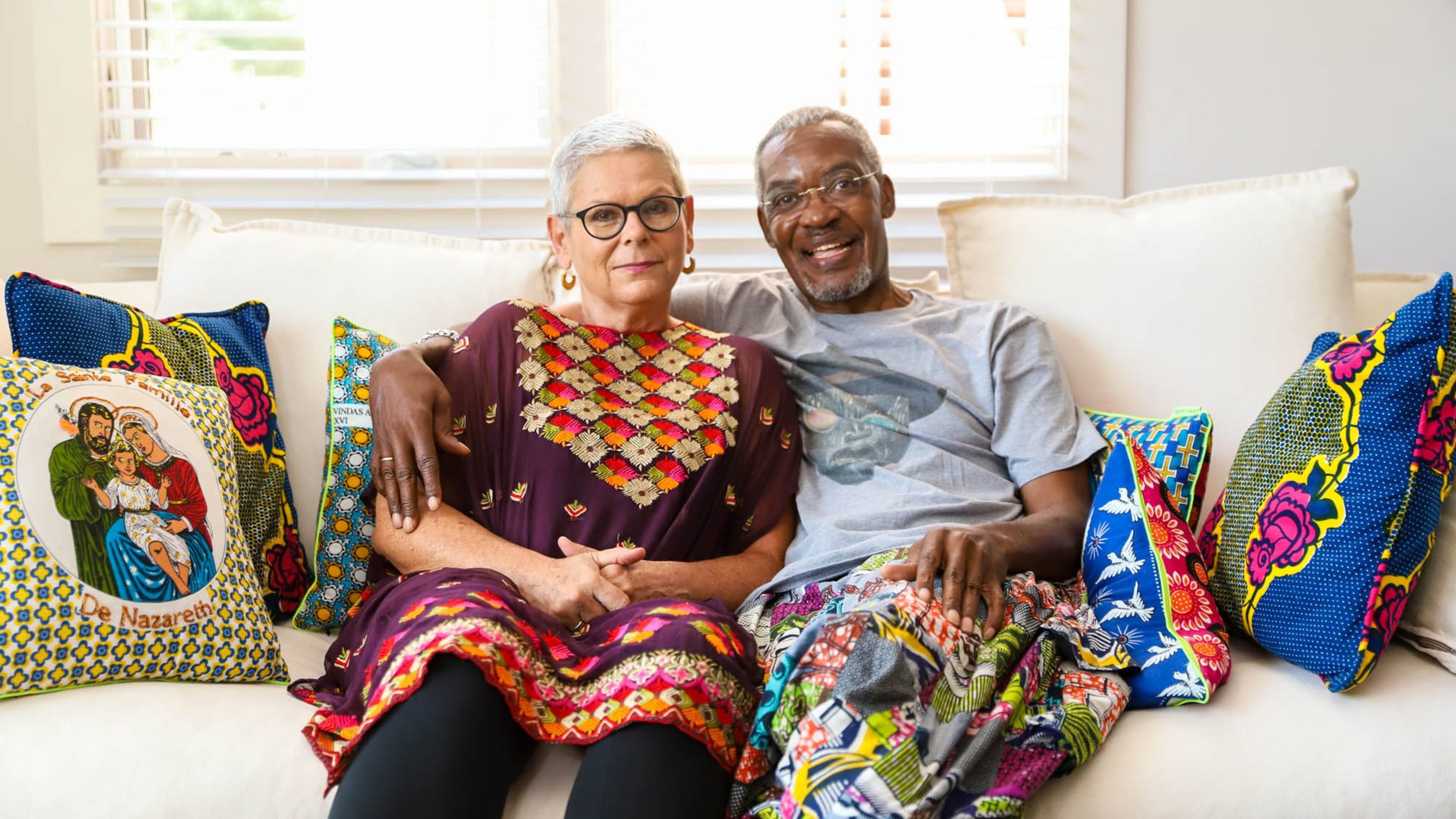New gallery on Auburn Avenue spotlights modernist African art

In the years after the bloody civil war in Mozambique was over, the African nation was still awash with guns.
Assault rifles, handguns, all the tools of war wielded by soldiers, both adult and child, stood in the way of lasting peace after the nearly 16-year war ended in 1992. Even the nation’s flag bore an image of a Kalashnikov rifle and bayonet. So, the government and aid groups began a disarmament mission to collect millions and millions of guns, dismantle them or destroy them.
Jumbe Sebunya, an aid worker, was taking a walk on his lunch break one day in 1994 and ran across a group of young men in an outbuilding welding bits and pieces of metal into figures and abstract compositions. Sebunya, an art lover, saw the bends and twists as worthy of merit. Upon further inspection, he saw the young men were working with remnants of guns and rifles.
Sebunya befriended the group and bought a few pieces of their work. He was particularly drawn to the sculpture work of Goncalo Mabunda, then a 19-year-old member of the collective. Soon, Sebunya and his wife, Anja, also an aid worker, bought more pieces.

Fast forward almost 30 years. The Sebunyas have an art gallery on Auburn Avenue, AkaziATL, in the old Haugabrooks Funeral Home. This month, AkaziATL celebrated its first anniversary in the space, which is owned by the Historic District Development Corporation for the Sweet Auburn neighborhood. Until the end of 2019, the Sebunyas had a small version of the gallery at the CARE International Headquarters in Atlanta, where Jumbe worked before retiring a couple of years ago. When relocating the gallery, they looked at neighborhoods across Atlanta before settling on the historic Auburn Avenue location, in part because of its proximity to the King Center, but also for the avenue’s history.

Some of the early work the couple bought from Mabunda hangs in the new space, along with a rotating collection of pieces the Sebunyas bought from dozens of artists they befriended during their nearly 35 years working in non-profits across Africa. Even in a city like Atlanta with its dynamic Black creative class of visual artists, filmmakers, musicians and writers, Akazi is unique, said one prominent curator.
“It’s hard to find another gallery in the United States that specializes in African modernists from the ‘70s, ‘80s and ‘90s,” said Lauren Tate Baeza, head curator for African art at the High Museum. “What they have is a number of artists who never left Africa. And those artists and their work have not gotten the attention in the U.S. as they have in Europe. Akazi is showing that work.”
That work is often different from the figurative and portraiture work popular now in contemporary African art. It is also different from what many people think African art is, Baeza said: “masks, wooden sculptures, especially that which is said to have a spiritual meaning.”
The work the Sebunyas are showing was created during a time when African nations were shaking off the vestiges of colonial European rule. Artists were responding to or rejecting European notions of what fine art was, what standards of beauty were, and instead were redefining what it meant to be African and free, Baeza said.

Mabunda is one such artist. His career blossomed. His contemporary pieces are meditations on the impact of war on him, his country and its people. Composed of bullet casings, decommissioned munitions, rocket launchers and gun fragments, his figures now sell for between $50,000 and $100,000 and are in the permanent collections of museums around the world. Former President Bill Clinton is a collector.
Work created at such a pivotal time in the continent’s history may speak to a contemporary Black American audience living through one of the nation’s most important social and racial justice movements of the last 50 years.
“Akazi is a safe space where those ideas could be shared through art, music, conversation to work in a pan-African ideal,” said Jumbe Sebunya. “It will curate and frame contemporary art from Africa, but also from here, to create a different narrative.”
The current show, “Transient Permanence” by Senegalese artist Mamadou Sadio Diallo, is the sort of prompt the gallery is designed for. On a recent Sunday, the gallery hosted a conversation between award-winning Nigerian writers Chika Unigwe and Samuel Kolawole. The room was filled with masked, vaccinated guests engaging in a lively discussion about their work, identity and who gets to define what it means to be African and Black.
“The perception of Africa is so simplistic,” Anja said. “Conflict and war and starvation. But seeing the number of livelihoods there sustained by creative endeavors, you may have a guy on the side of the road with a sewing machine turning out beautiful clothing... how can we make their work be more visible?”

AkaziATL Gallery
10 a.m.-8 p.m. Sunday-Saturday, but appointments needed.
364 Auburn Ave., Atlanta. 404-574-0120, akaziatl.com


